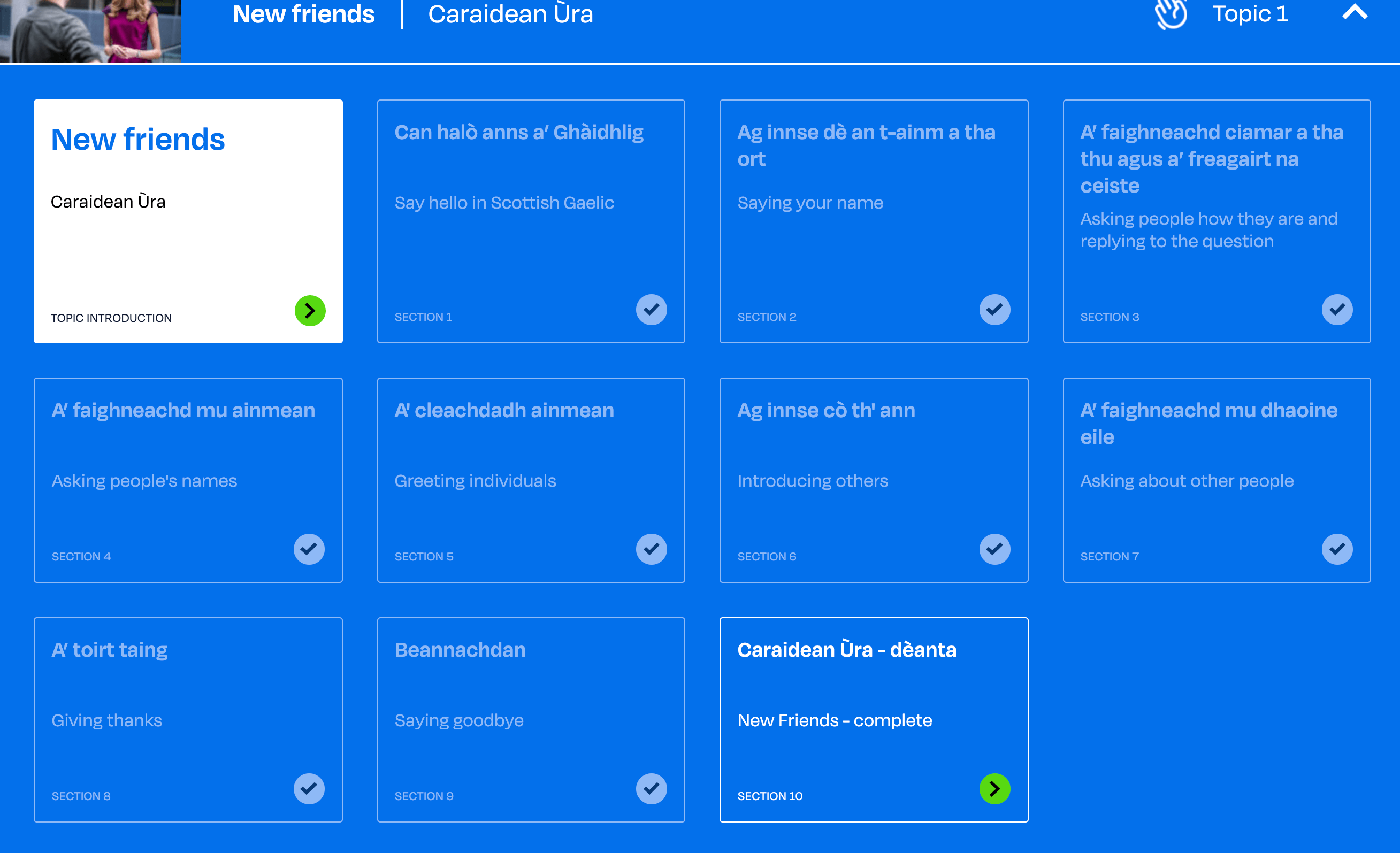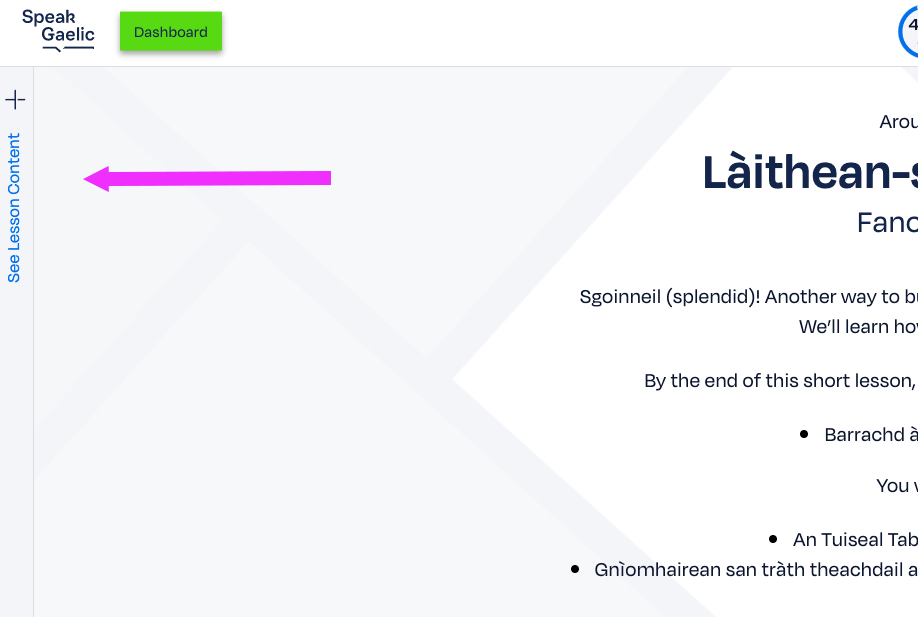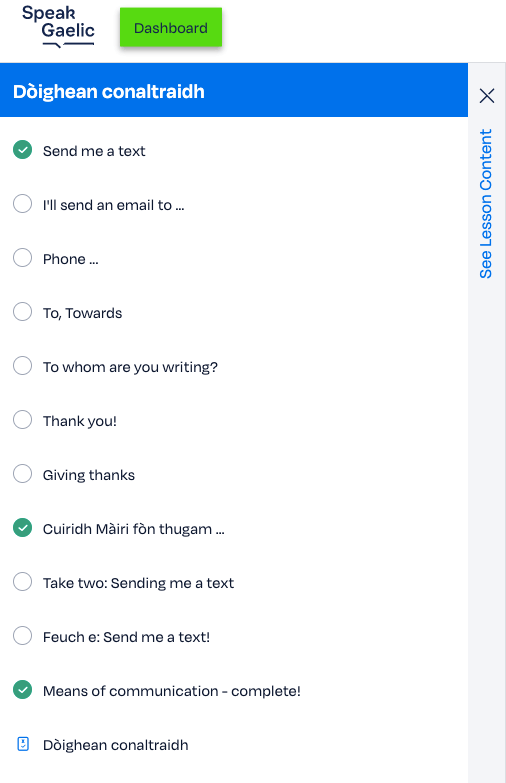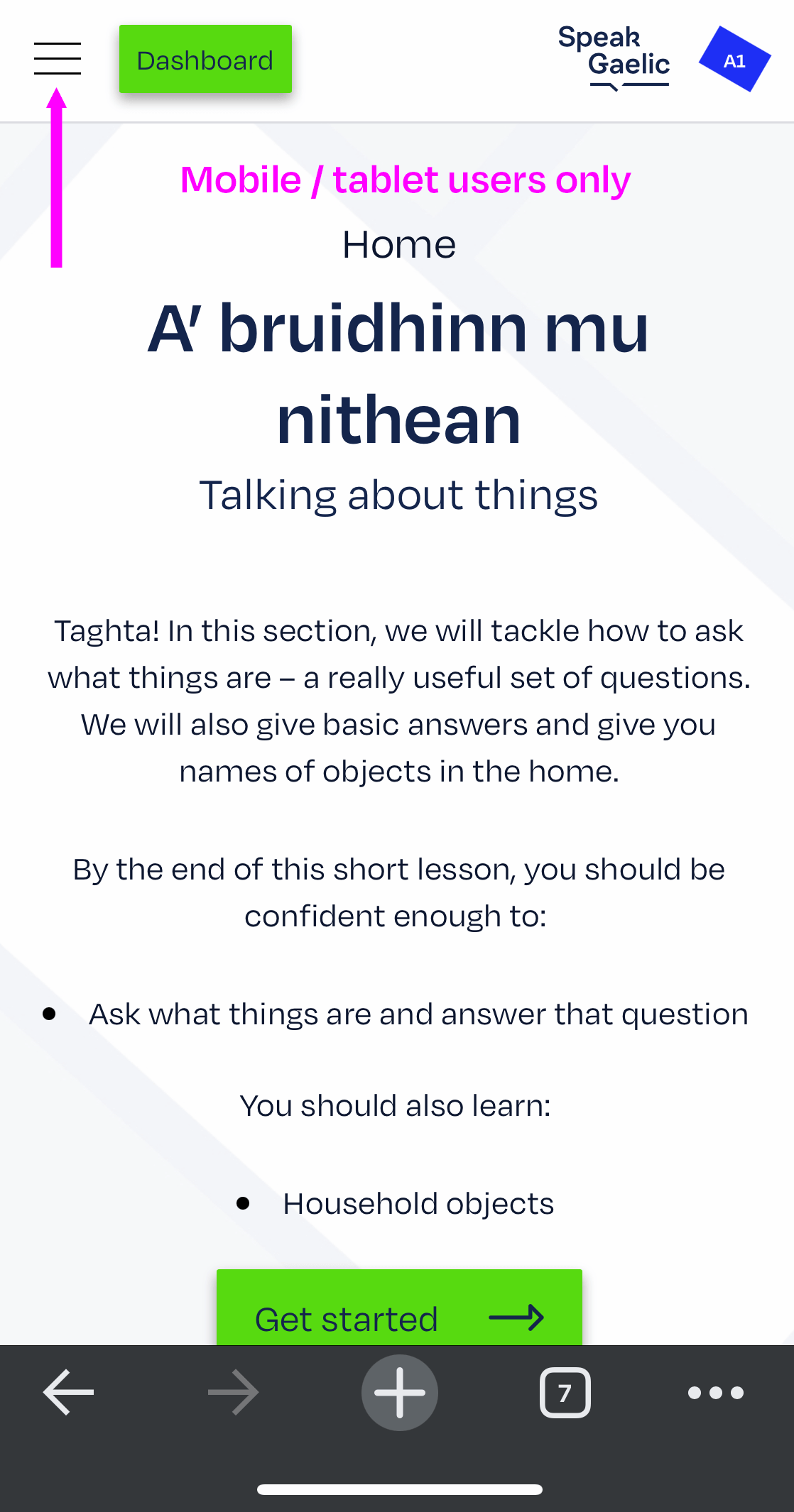Air a bhith …
Has/have been …
We saw air used in two different grammatical structures in the opening passage, and in the example sentences.
These are both used to express aogas (aspect), how an action, a verb, extends over time.
We can express an tràth coileanta (the perfect tense) explicitly as follows:
Ma tha thu air ìre B2 a ruigsinn …
If you have reached B2 level …
Bidh thu air 400 uairean de dh’ionnsachadh a dhèanamh …
You will have done 400 hours of learning …
| Ma tha thu air ìre B2 a ruigsinn … | If you have reached B2 level … |
| Bidh thu air 400 uairean de dh’ionnsachadh a dhèanamh … | You will have done 400 hours of learning … |
We can use air a bhith … with a progressive verbal noun to say ‘have been …’.
We use it to express the perfect progressive tense, to say the action, denoted by the verb, refers to an ongoing activity that started in the past and continues into the present:
Feumaidh gu bheil thu air a bhith ag ionnsachadh na Gàidhlig airson greis …
You must have been learning Gaelic for a while …
Tha mi air a bhith a’ fuireach ann an Alba fad dà bhliadhna.
I have been living in Scotland for two years.
In Gaelic, the aogas (aspect) of verbs is slightly different.
The simple tenses of the verb have a perfect aspect where they do not in English.
But the use of air + verbal noun makes this more explicit. For example:
Ma ràinig thu ìre B2 …
If you (have) reached B2 level …
Ma tha thu air ìre B2 a ruigsinn …
If you have reached B2 level …
Dh’ionnsaich mi
I learned, I have learned
Tha mi ag ionnsachadh
I am learning
Bha mi ag ionnsachadh
I was learning
Tha mi air Cuimris ionnsachadh
I have learned Welsh
Tha mi air Gàidhlig ionnsachadh
I have learned Gaelic
Bha mi air Fraingis ionnsachadh
I had learned French
Tha mi air a bhith ag ionnsachadh
I have been learning
Bha mi air a bhith ag ionnsachadh
I had been learning




